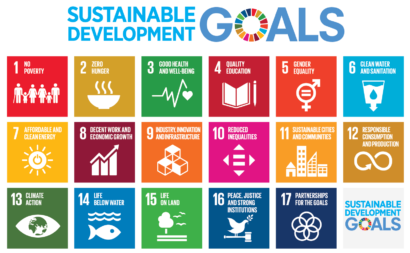Our Commitments
In September 2015, the Sustainable Development Goals (SDGs), which had been established at the Rio+20 summit, were adopted by the UN General Assembly with the 2030 Agenda for Sustainable Development. These 17 SDGs, linked to 169 targets, are meant to form an “action plan to free humanity from poverty and put the planet back on the path to sustainability”.

The Food Donation Exchange is an effective tool that brings efficiency, transparency, and ensures good management of exchanges. It aligns with the logic of sustainability common to the UN SDGs. These goals reflect three dimensions of sustainable development: social, economic, and environmental aspects.
The Social AspectThe platform aims to contribute to providing fresh and varied products to the most disadvantaged by establishing a secure relationship between food donors and food aid organizations responsible for collecting and redistributing them. | |
 | The Economic AspectGood management of unsold food can be a source of savings when unsold items are donated to the food aid sector: reduction of waste treatment costs for some, reduction of purchase costs for others. |
 | The Environmental AspectBy facilitating the exchange of unsold food, the platform contributes to reducing the environmental footprint of the food system: less waste, less food waste, and less waste of natural resources. |
Our Priorities
As we go through a food crisis, the Food Donation Exchange is proud to be engaged in the fight against food waste and loss. Specifically, it is committed to supporting the global goals of eliminating food insecurity (SDG #2), as well as reducing food waste by half (SDG #12.3) by 2030.
#2. “Zero” Hunger
|
In Belgium, thousands of people turn to aid to meet the basic need of feeding themselves. In 2018, food aid organizations distributed food to about 160,000 people. If we add the food given by the Public Social Welfare Centers (CPAS), the number of beneficiaries reaches 300,000 people. |
What the Food Donation Exchange Does
Through its platform, the Food Donation Exchange contributes to the fight against food insecurity and exclusion in Belgium by facilitating food donations between food companies with unsold items (the donors) and food aid organizations seeking donations (the receivers). Currently, we’re talking about more than 12,000,000 meals distributed thanks to the Food Donation Exchange platform!
#12. Responsible Consumption and Production
|
While 20% of the food produced in the European Union is lost or wasted, some 36 million people cannot afford a quality meal. According to the FAO (Food and Agriculture Organization), the overall food loss in Belgium is estimated at 3.6 million tons per year, which is on average 345 kg of food per year per person. |
What the Food Donation Exchange Does
“It is in this context that, thanks to the valuable collaboration of its network of donors, the Food Donation Exchange has facilitated a large number of donations and prevented no less than 5,300 tons of perfectly consumable food from being” wasted.
